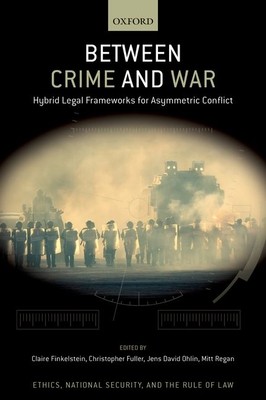
- We will send in 10–14 business days.
- Author: Finkelstein
- Publisher: Oxford University Press, USA
- ISBN-10: 0197638791
- ISBN-13: 9780197638798
- Format: 16.3 x 23.8 x 4.3 cm, hardcover
- Language: English
- SAVE -10% with code: EXTRA
Reviews
Description
The threat posed by the recent rise of transnational non-state armed groups does not fit easily within either of the two basic paradigms for state responses to violence. The civilian paradigm focuses on the interception of demonstrable immediate threats to the safety of others. The military paradigm focuses on threats posed by collective actors who pose a danger to the state's ability to maintain basic social order and, at times, the very existence of the state. While the United States has responded to the threat posed by non-state armed groups by using tools from both paradigms, it has placed substantially more emphasis on the military paradigm than have other states. While several reasons may contribute to this approach, one may be the assumption that a state must use each set of tools strictly according in accordance with the principles that underlie each paradigm. Implicit in this assumption may be the sense that the only alternative to the civilian paradigm is the
unqualified military one.
EXTRA 10 % discount with code: EXTRA
The promotion ends in 16d.16:13:29
The discount code is valid when purchasing from 10 €. Discounts do not stack.
- Author: Finkelstein
- Publisher: Oxford University Press, USA
- ISBN-10: 0197638791
- ISBN-13: 9780197638798
- Format: 16.3 x 23.8 x 4.3 cm, hardcover
- Language: English English
The threat posed by the recent rise of transnational non-state armed groups does not fit easily within either of the two basic paradigms for state responses to violence. The civilian paradigm focuses on the interception of demonstrable immediate threats to the safety of others. The military paradigm focuses on threats posed by collective actors who pose a danger to the state's ability to maintain basic social order and, at times, the very existence of the state. While the United States has responded to the threat posed by non-state armed groups by using tools from both paradigms, it has placed substantially more emphasis on the military paradigm than have other states. While several reasons may contribute to this approach, one may be the assumption that a state must use each set of tools strictly according in accordance with the principles that underlie each paradigm. Implicit in this assumption may be the sense that the only alternative to the civilian paradigm is the
unqualified military one.


Reviews